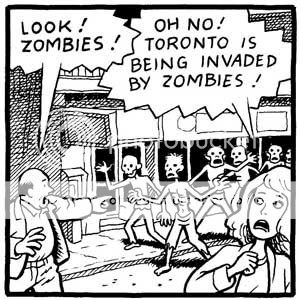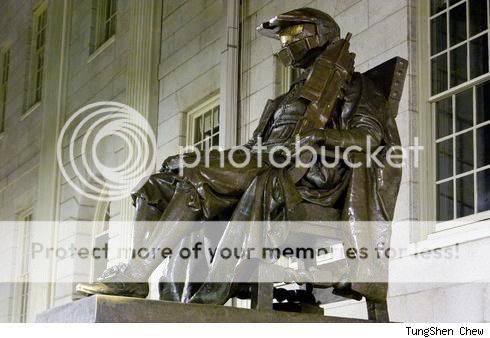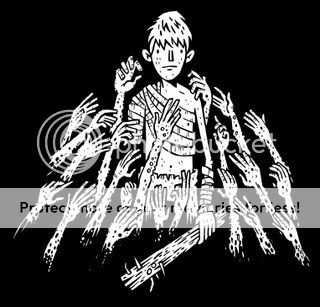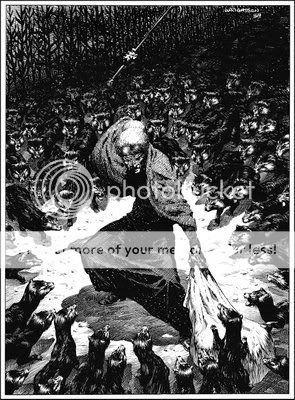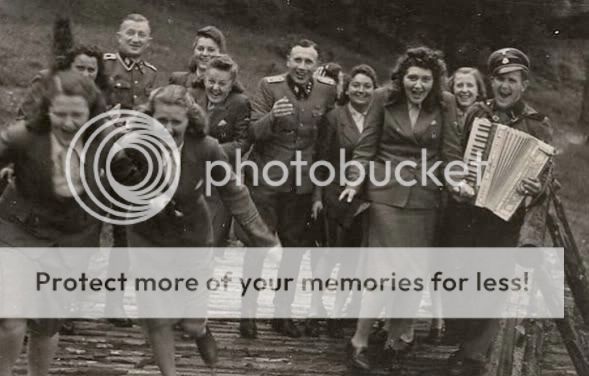I had to do some kind of October horrorblogging special, right?
That’s what I was asking myself a few days ago, without realizing that no, I didn’t, since I really don’t do a big October blogathon every year. My big Clive Barker Books of Blood review rampage was back in 2005, and my initial 31-day foray into horrorblogging happened in 2003. I guess I take even years off, sort of like how the Star Trek movies take the even-numbered installments off from sucking.
But I couldn’t really think of anything to tackle, until I was about a third of the way into The Stand and realized that I wanted to read more about this Randall Flagg character. Hmm, Flagg’s the villain in those Dark Tower books, right? And I still haven’t gotten around to reading them ever…why don’t I dig up those copies of the first few volumes that I got for Christmas a few years ago and read them all month long, and blog about it while I’m at it?
So that’s what I’ll be doing to celebrate the scariest month of the year this year. But things will be different from past years’ ambitious blog projects. Even though the Dark Tower series is ostensibly Stephen King’s magnum opus, my blogging thereof will stay true to the humble roots of my idea to do so. Don’t hold me to this or anything, because it’s a woman’s prerogative to change her mind, but I’ll probably be keeping things short, sweet, and informal, more logging my reactions than offering analysis. I learned from my abortive attempt to blog The Lord of the Rings that the second the writing gets in the way of the reading, it’s no fun anymore.
Before we get started, I want to list the things I knew, or thought that I knew, about The Dark Tower before cracking open its first volume, The Gunslinger.
1) It’s about a gunslinger named Roland. He’s on some kind of quest for a big important building called the Dark Tower. These ideas were lifted from the Childe Roland folk tales of old. It’s a dark fantasy epic.
2) The main bad guy is Randall Flagg, who in other incarnations is also the main bad guy of The Stand and Eyes of the Dragon. He’s also known here as the man in black.
3) In the books, the Tower is some sort of interdimensional vortex.
4) The gunslinger was trained in some sort of vaguely aristocratic ritualized way as a kid, during which time he also had a hawk. (I learned this from Wizard-mandated readings of the recent Marvel Comics prequel series, The Dark Tower: The Gunslinger Born.) He’s still got a hawk that he uses.
5) Somehow, The Dark Tower mythos is tied into many of King’s other works, especially the ones with Flagg but also tons of other stuff. King became a lot more deliberate about this during the ’90s.
6) The first sentence is “The man in black fled across the desert, and the gunslinger followed.”
I’ve already learned I was at least partially wrong about some of those things, but my point was that this is it–that’s all I knew. I didn’t even know if I would like the books, or if they’re worth writing about! To be cute about it, I’m in the dark about them.
So we’ll see how this goes. I may give up. I may take longer than a month to read the books. But I’ll give it a shot. It’s like a quest of my very own!


